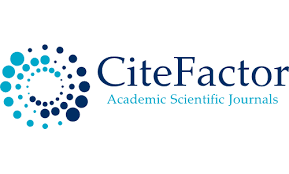A study the effect of brittle concrete working property by developing installation parameters (Subject Review)
Keywords:
brittle concrete, parameters, high-performanceAbstract
In the past tense, studies relating to concrete with high performance have shown the harmful role of excess water in concrete. The reduction of this quantity of water, by using deflocculates and by correcting granular stacking via ultrafine, has led to gains in strength and known durability. As an extension of this scientific work, the observed improvement in the workability of these new concretes led the researchers to develop and make this property reliable. Today, in total continuity with high-performance concretes, it is a change of objectives constituting a veritable cultural revolution proposed by the self-compacting concretes: the study of the material is no longer governed solely by improving resistance and durability. However, these latter properties remain wedged at levels equivalent to or higher than those of joint concretes. In this area now, with self-compacting concretes, the ability to be easily placed work without vibration which has become priorities. These skills will have great consequences in terms of execution time, reduction of materials, quality of concreting, ease of implementation, respect for the neighborhood, and less hardship for the workers
References
Acda, M.N. (2010), “Sustainable use of waste chicken feather for durable and low cost building materials for tropical climates”, Sustain. Agr. Tech. Plan. Manag., 353-366.
Brandelli, A., Sala, L. and Kalil, S. J. (2015), “Microbial enzymes for bioconversion of poultry waste into added-value products”, Food Res.Int., 73, https://doi.org/10.1016/j.foodres.2015.01.015.
British Standard (1881), Testing Concrete-Part 116, Method for Determination of Compressive Strength of Concrete Cubes.
Büyükkaya, K. (2017), “Effects of the fiber diameter on mechanic properties in polymethyl-methacrylate composites reinforced with goose feather fiber”, Mater. Sci. Appl., 8(11), 811-827. https://doi.org/10.4236/msa.2017.811059 .
Faried, A.S., Mostafa, S.A., Tayeh, B.A. and Tawfik, T.A. (2021b), “The effect of using nano rice husk ash of different burning degrees on ultra-high-performance concrete properties”, Constr.
Build. Mater., 290, 123279.
https://doi.org/10.1016/j.conbuildmat.2021.123279 .
Mansour, W. and Tayeh, B.A. (2020), “Shear behaviour of RC beams strengthened by various ultrahigh performance fibre- reinforced concrete systems”, Adv. Civil Eng., 2020, 2139054. https://doi.org/10.1155/2020/2139054.
Kene, K. S., Vairagade, V. S., Sathawane, S., “Experimental Study on Behavior of Steel and Glass Fiber Reinforced Concrete Composites”, Bonfring International Journal of Industrial Engineering and Management Science, December 2012, 2 (04): 125–130.
Mindess, S., Young, J. F., Darwin, D., “Concrete”, Second Edition, Prentice Hall, Upper Saddle River, NJ, 2002.
Ranaivomanana, N., Multon, S., Turatsinze, A., “Basic Creep of Concrete under Compression, Tension and Bending”, Construction and Building Materials, 2013, 38: 173– 180.
Scheffler, C., Zhandarov, S., Mader, E., “Alkali Resistant Glass Fiber Reinforced Concrete: Pull–Out Investigation of Interphase Behavior Under Quasi–Static and High Rate Loading”, Cement and Concrete Composites, 2017, 84: 19–27
Downloads
Published
Issue
Section
License

This work is licensed under a Creative Commons Attribution-NonCommercial 4.0 International License.
User Rights
Under the Creative Commons Attribution-NonCommercial 4.0 International (CC-BY-NC), the author (s) and users are free to share (copy, distribute and transmit the contribution).
Rights of Authors
Authors retain the following rights:
1. Copyright and other proprietary rights relating to the article, such as patent rights,
2. the right to use the substance of the article in future works, including lectures and books,
3. the right to reproduce the article for own purposes, provided the copies are not offered for sale,
4. the right to self-archive the article.












